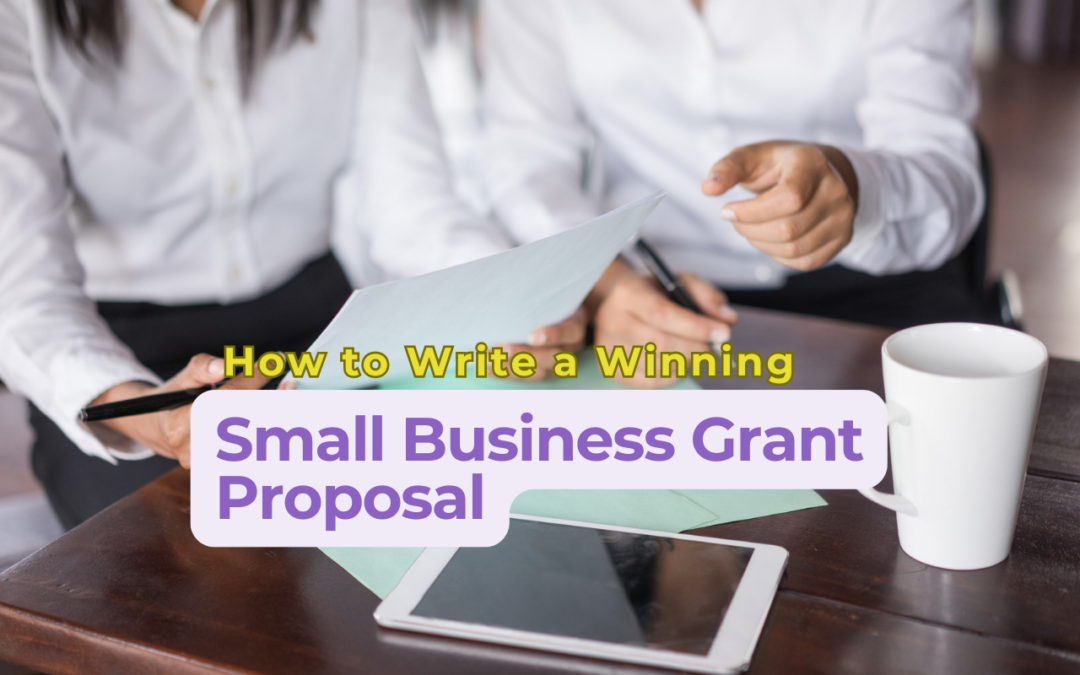Securing a small business grant can be a game-changer, providing the necessary funds to grow and scale your business. However, with fierce competition, crafting a compelling grant proposal is crucial. A well-written grant proposal demonstrates your business’s potential, aligns with the funder’s objectives, and effectively communicates how the grant will make a tangible impact. Below is a comprehensive guide to help you write a winning small business grant proposal.
1. Research and Identify the Right Grant
Before you begin writing, it is essential to research available grants to find the best fit for your business. Applying for the wrong grants wastes time and decreases your chances of success. Here are the key factors to consider when identifying the right grant:
- Eligibility Requirements – Each grant has specific eligibility criteria. Some are targeted at startups, women-owned businesses, minority-owned businesses, nonprofits, or specific industries. Ensure your business meets all requirements before applying.
- Funding Amount – Grants vary in size, from a few thousand dollars to millions. Identify how much funding you need and apply for grants that align with your financial requirements.
- Application Deadlines – Many grants have strict deadlines. Mark important dates on your calendar to avoid last-minute submissions.
- Grant Purpose – Some grants focus on specific objectives, such as job creation, technology innovation, sustainability, or community development. Choose grants that align with your business goals and values.
- Past Recipients – Research previous grant winners to understand what types of businesses have successfully secured funding.
Conducting thorough research ensures that your application is targeted, increasing your chances of success.
2. Understand the Grantor’s Goals
Grant providers have specific objectives they want to achieve through funding. Whether they focus on economic development, minority business support, technological advancements, or environmental sustainability, tailoring your proposal to align with their mission is critical. Before writing, consider:
- Who is providing the grant? (Government agency, private foundation, corporate sponsorship, etc.)
- What are their funding priorities?
- What impact do they want to make with the grant?
- How does your business align with their mission?
By clearly understanding the grantor’s goals, you can frame your proposal in a way that resonates with them.
3. Write a Compelling Executive Summary
The executive summary is your opportunity to make a strong first impression. A well-crafted summary should:
- Clearly state your business name, mission, and funding request.
- Summarize how the grant will help your business and contribute to the grantor’s objectives.
- Highlight key information concisely and persuasively.
- Be limited to one page or less.
A strong executive summary sets the stage for the rest of the proposal and entices the reader to continue.
4. Provide a Detailed Business Description
A compelling business description establishes credibility and demonstrates why your business deserves funding. Include:
- Your Business Model – Explain how your business operates and generates revenue.
- Target Market – Describe your customers, their needs, and how your business serves them.
- Competitive Advantage – Identify what sets your business apart from competitors.
- Company History – Highlight key milestones, achievements, and past successes.
- Mission and Vision – Clearly state your business’s mission and long-term goals.
Providing a comprehensive business description allows the grant provider to understand your business’s potential and sustainability.
5. Define the Problem and Your Solution
Grant providers want to see how your business addresses a pressing problem or need. To make a strong case:
- Define the specific problem your business is solving.
- Provide data, statistics, and research to validate the problem.
- Explain how your business provides a unique and effective solution.
- Demonstrate the impact of your solution on your industry, community, or economy.
A well-defined problem and solution section strengthens your case and makes your application more compelling.
6. Outline a Clear Budget Plan
A well-organized budget plan shows grant providers how funds will be used efficiently. Your budget should include:
- Projected Expenses – List all expected costs, such as equipment, marketing, research, staffing, or product development.
- Justification for Each Expense – Explain why each expense is necessary for business growth and how it aligns with the grantor’s objectives.
- Financial Sustainability – Show how your business will continue operating after the grant money is used.
- Previous Funding Sources – If applicable, list other funding sources or investments your business has secured.
Providing a transparent and detailed budget increases credibility and trustworthiness.
7. Demonstrate Business Impact and Sustainability
Grant providers prefer funding businesses with long-term potential. Demonstrate your business’s sustainability by:
- Outlining your long-term growth strategy.
- Showing how the grant will lead to increased revenue, job creation, or community benefits.
- Highlighting your ability to secure additional funding in the future.
- Providing evidence of a strong management team and solid business operations.
Emphasizing sustainability reassures grant providers that their investment will have lasting effects.
8. Include Supporting Documents
Supporting documents strengthen your proposal by providing concrete evidence of your business’s credibility. Common attachments include:
- Business licenses and permits.
- Financial statements (profit and loss statements, balance sheets, etc.).
- Letters of recommendation from partners, clients, or industry experts.
- Market research data and customer testimonials.
- Organizational charts and team bios.
Including well-organized supporting documents enhances your application’s professionalism and legitimacy.
9. Follow Formatting and Submission Guidelines
Each grant application has specific formatting and submission requirements. Before submitting:
- Review word limits and formatting instructions.
- Ensure all required documents are attached.
- Check submission deadlines and required platforms.
- Double-check for completeness and compliance with all guidelines.
Failure to follow guidelines can result in automatic disqualification, so pay attention to details.
10. Proofread and Edit
A well-polished proposal increases credibility. Ensure:
- There are no spelling or grammar mistakes.
- The tone is professional, concise, and persuasive.
- The content flows logically and clearly.
- The proposal is reviewed by a trusted advisor or editor before submission.
A final proofread helps catch errors and enhances clarity and readability.
Conclusion
Writing a winning small business grant proposal requires research, strategic alignment with the grantor’s objectives, and a well-structured presentation. By following these steps, you enhance your chances of securing funding to drive your business forward. Remember, persistence is key. If one grant application is unsuccessful, use feedback to refine your approach and apply for other opportunities.
With a strong proposal and a clear vision, your business can secure the funding it needs to thrive.












